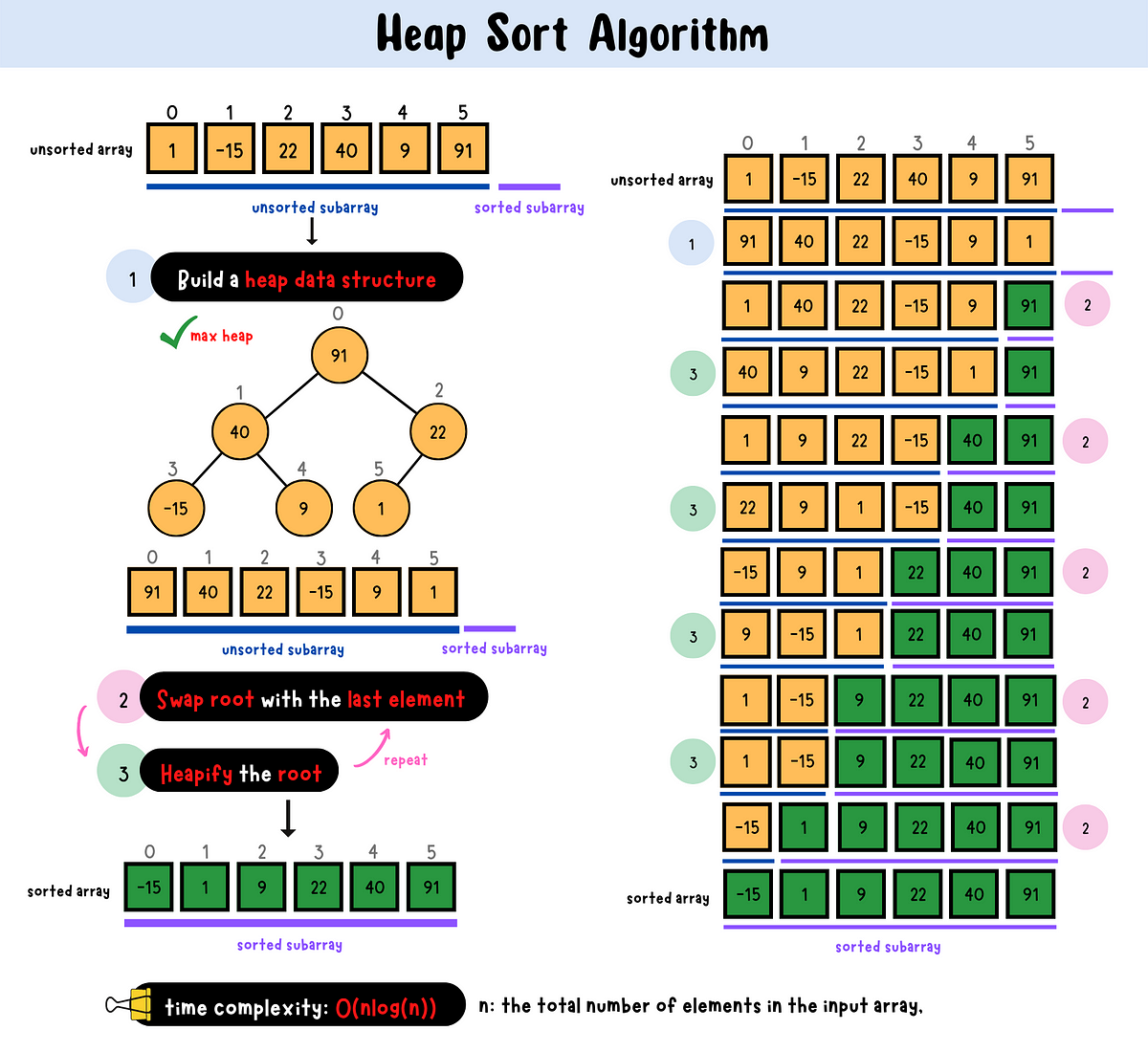
1. Insert Value(11)
Into the heap below:
10
/ \
9 8
/ \ / \
6 5 7 4
/ \ /
2 1 31.1 Insert Value(11): Tony’s Solution
10
/ \
9 8
/ \ / \
6 5 7 4
/ \ / \
2 1 3 [11]
10
/ \
9 8
/ \ / \
6 [11] 7 4
/ \ / \
2 1 3 (5)
10
/ \
[11] 8
/ \ / \
6 (9) 7 4
/ \ / \
2 1 3 (5)
[11]
/ \
(10) 8
/ \ / \
6 (9) 7 4
/ \ / \
2 1 3 (5)2. Delete Root(10)
from the heap below:
{10}
/ \
9 8
/ \ / \
6 5 7 4
/ \ /
2 1 32.1 Delete Root(10): Tony’ Solution
{10}
/ \
9 8
/ \ / \
6 5 7 4
/ \ /
2 1 (`3)
[3]
/ \
(9) 8
/ \ / \
6 5 7 4
/ \ /
2 1 ()
(9)
/ \
[3] 8
/ \ / \
6 5 7 4
/ \ /
2 1 ()
(9)
/ \
(6) 8
/ \ / \
[3] 5 7 4
/ \ /
2 1 ()or more accurately…
(9)
/ \
(6) 8
/ \ / \
[3] 5 7 4
/ \
2 1 3. Pop() Heap & Insert() Array
A new heap is created inserting array from index 0 onwards [55, 22, 34, 10, 2, 99, 68], then the following happens:
pop()operation from heap (one at a time) andinsert()new array,
Question: What order are the values compared to original array?
4. Pop() Heap & Insert() Array: Tony’s Solution
Assuming max-heap as question does not specify.
4.1 Create max_heap via insert() from origin_array
original_array = [55, 22, 34, 10, 2, 99, 68]
4.1.1 insert(55, 22, 34, 10, 22)
insert(55, 22, 34, 10, 22) keeping the tree complete
55
22 34
10 2 Recall, a Complete Tree:
- is a tree that is:
- completely filled with nodes
- no nodes are missing.
4.1.2 insert(99)
55
22 (34)
10 2 [99]
55
22 [99]
10 2 (34)
[99]
22 (55)
10 2 (34) 4.1.3 insert(68)
99
22 (55)
10 2 34 [68]
99
22 [68]
10 2 34 (55)4.2 Create new_array via pop() of max_heap
99
22 68
10 2 34 [55]Psuedo-code delete_node:
pop()fromroot_node(e.g.55)- replace
last_nodetoroot_node - trickle
root_nodeto keep the tree complete
4.3 Expected Result: Descending Order of original_array
The question didn’t specifiy the working-out, thus by properties of max_heap or priority_queue, values removed or popped are:
- From Highest priority to lowest priority or value
Thus, new_array is expected to be the:
original_array- sorted in descending order
5. HeapSort()
Heapsort() is a sorting algorithm that:
insert()all the values- into a
heapand then pop()each one.
The exact scenario in Question 4.
5.1 Heapsort() is \(O(NlogN)\)
Like Quicksort():
insert()\(N\) values- into the
heap: each insertion takes \(log N\) steps.